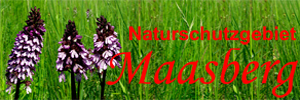
|

|

|

|
Riesling, the noblest German grapeIt takes a Nahe-winemaker about 1000 hours of work per year and per hectare of vineyard ("Wingert") to prepare the ground, plant the grapevines, deal with pest control, and of course, to harvest the grapes. This has not changed since the time of Virgil(79-19B.C.)who wrote as follows in his agricultural poems "Georgica" (Liber Secundus: 404-412):
When the grapevine has lost its last leaf,
The Riesling, the noblest German grape, needs special care. It requires a good place to grow, meaning a slope which is well ventilated, with soil rich in minerals, a summer with enough heat and humidity and then a dry and sunny autumn. The Riesling is, in fact, the grape with the longest growing time. For this reason, it is a grape of the highest quality. The resulting wine is well worth the effort, though. The Riesling from the Nahe valley is especially fruity and full of minerals and its fine acidity gives it elegance and a low alcohol level. This Nahe wine is well known far and wide. The Riesling was also called Rösling or Rüsling, and was already being grown in the Nahe Valley during the Middle Ages although it was only officially documented since the 15th century. The following tale goes back to this time: In 1439 the Rhine Earl Friedrich Wilhelm, who was not opposed to the odd drink, lost the Nahe wine village Hüffelsheim and its inhabitants in a bet during one of his drinking orgies in the Ebernburg castle. In this bet he promised the village to the person who could down in one the wine, which filled his messenger's boot. The wine-loving Knight Boos of Waldeck could not miss this opportunity and earned the village in this way. The tale goes that the Knight wanted to repeat the bet to get the wine village Roxheim as well —but the Rhine Earl had learned his lesson by then. |
|

|
|
|
| [ Mail to Webmaster ] info@maasberg.ch |